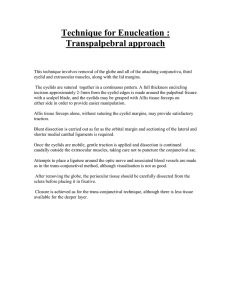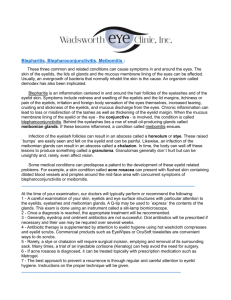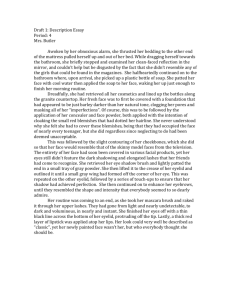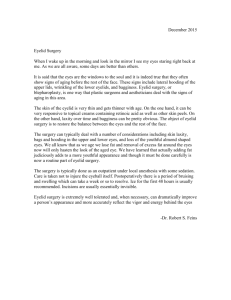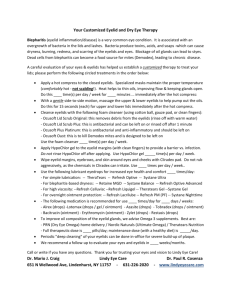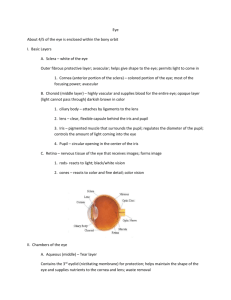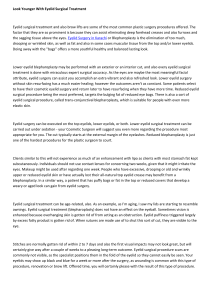Word - The EyeBag Company
advertisement
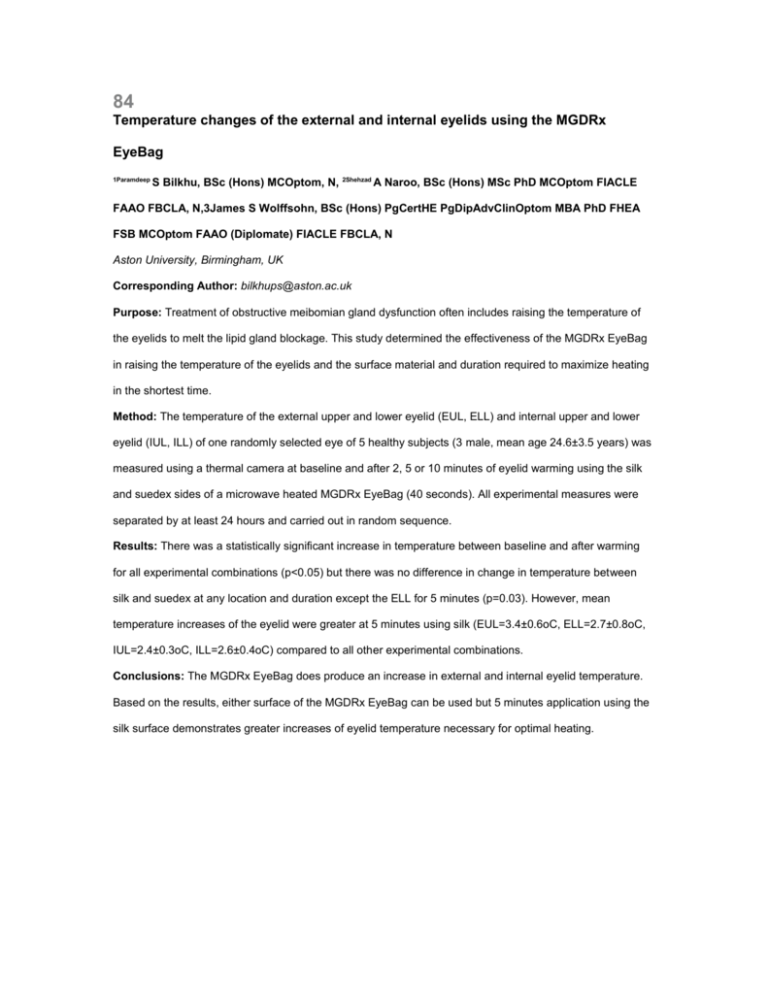
84 Temperature changes of the external and internal eyelids using the MGDRx EyeBag 1Paramdeep S Bilkhu, BSc (Hons) MCOptom, N, 2Shehzad A Naroo, BSc (Hons) MSc PhD MCOptom FIACLE FAAO FBCLA, N,3James S Wolffsohn, BSc (Hons) PgCertHE PgDipAdvClinOptom MBA PhD FHEA FSB MCOptom FAAO (Diplomate) FIACLE FBCLA, N Aston University, Birmingham, UK Corresponding Author: bilkhups@aston.ac.uk Purpose: Treatment of obstructive meibomian gland dysfunction often includes raising the temperature of the eyelids to melt the lipid gland blockage. This study determined the effectiveness of the MGDRx EyeBag in raising the temperature of the eyelids and the surface material and duration required to maximize heating in the shortest time. Method: The temperature of the external upper and lower eyelid (EUL, ELL) and internal upper and lower eyelid (IUL, ILL) of one randomly selected eye of 5 healthy subjects (3 male, mean age 24.6±3.5 years) was measured using a thermal camera at baseline and after 2, 5 or 10 minutes of eyelid warming using the silk and suedex sides of a microwave heated MGDRx EyeBag (40 seconds). All experimental measures were separated by at least 24 hours and carried out in random sequence. Results: There was a statistically significant increase in temperature between baseline and after warming for all experimental combinations (p<0.05) but there was no difference in change in temperature between silk and suedex at any location and duration except the ELL for 5 minutes (p=0.03). However, mean temperature increases of the eyelid were greater at 5 minutes using silk (EUL=3.4±0.6oC, ELL=2.7±0.8oC, IUL=2.4±0.3oC, ILL=2.6±0.4oC) compared to all other experimental combinations. Conclusions: The MGDRx EyeBag does produce an increase in external and internal eyelid temperature. Based on the results, either surface of the MGDRx EyeBag can be used but 5 minutes application using the silk surface demonstrates greater increases of eyelid temperature necessary for optimal heating.
